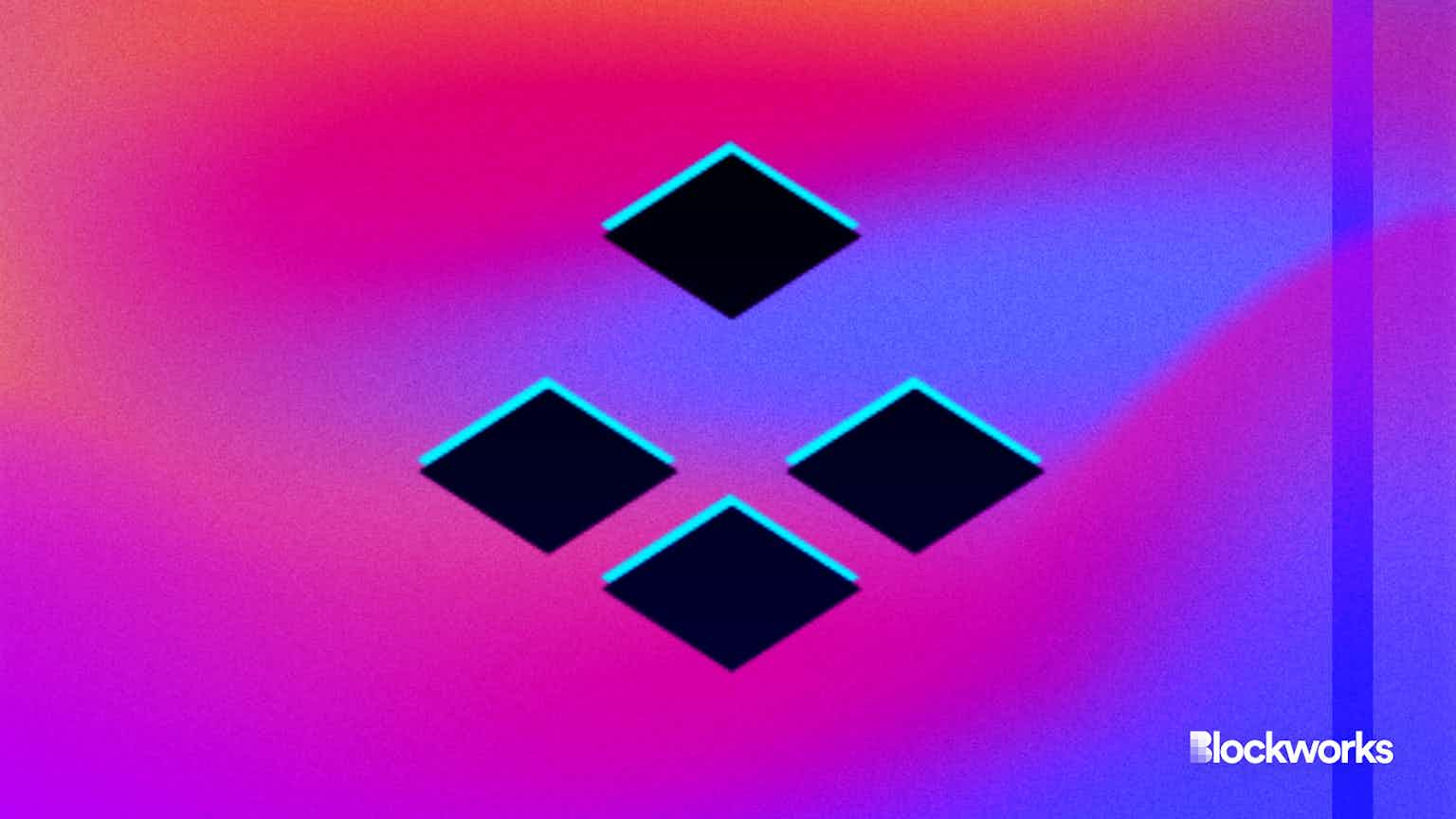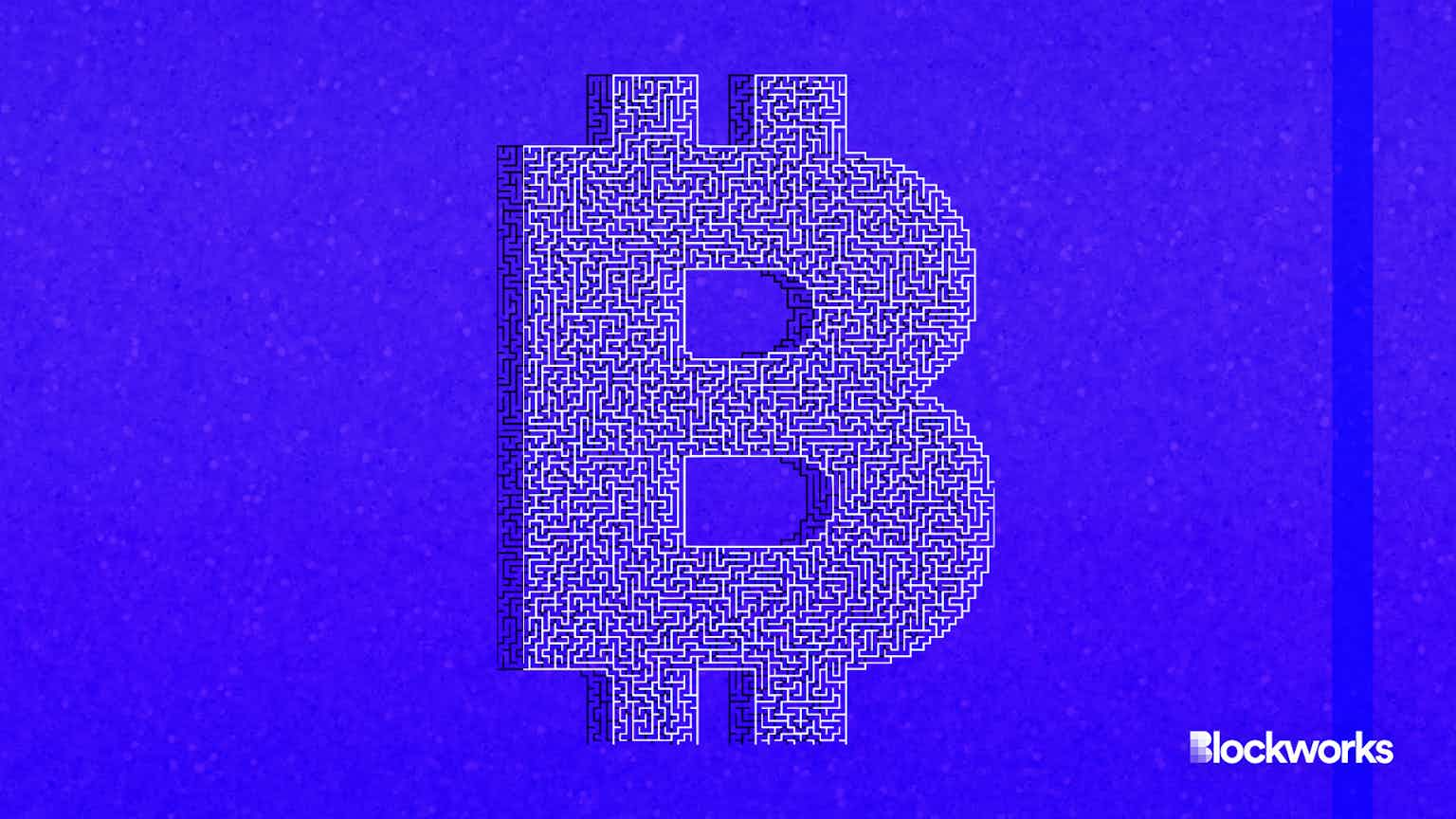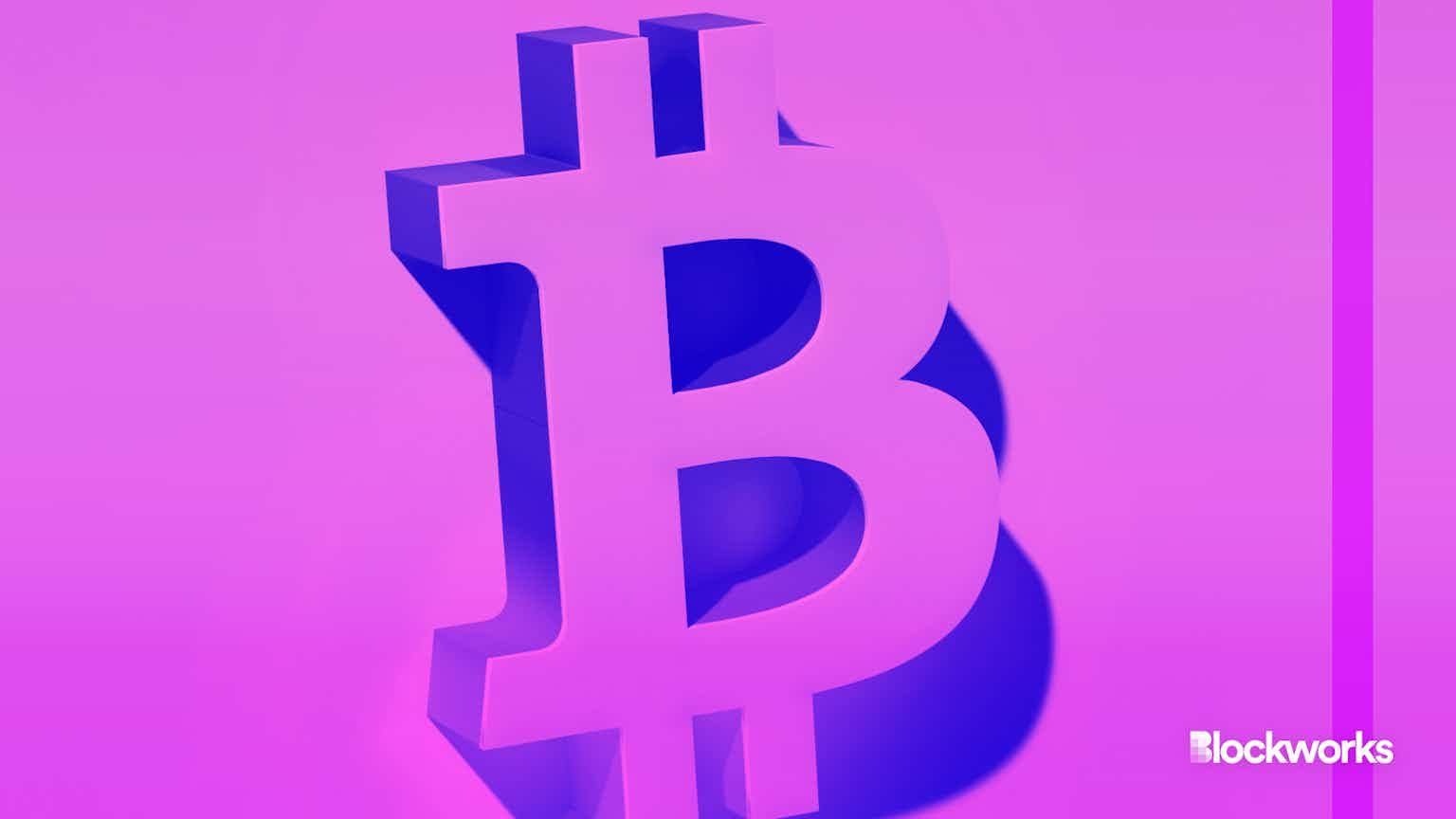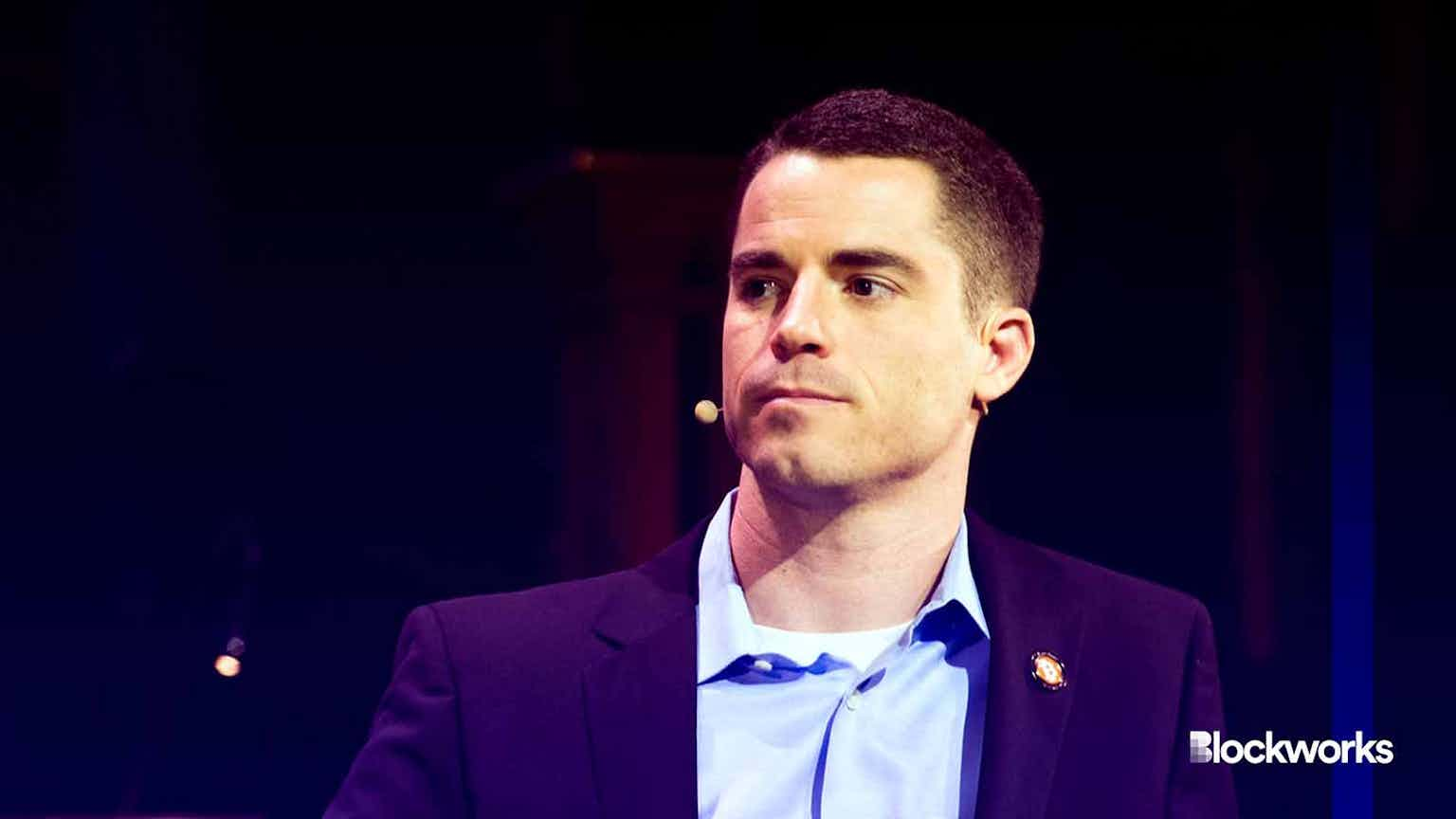Empire Newsletter: Miners and Wall Street eye new AI revenue
AI might be enough to lure institutional investors to miners that have diversified their revenue

mezzotint/Shutterstock modified by Blockworks
AI comes for bitcoin mining
AI was Wall Street’s favorite buzzword last year.
And, as with all trends, investors are looking to take advantage of the new technology, eyeing companies that could give them direct exposure. Bitcoin miners may just offer some investors the best of both worlds: access to bitcoin and AI at the same time.
For months we’ve been talking about what the Bitcoin halving really means for miners. But we’re finally post-halving, which means reality has set in. With block rewards cut in half, it’s no surprise that companies are mulling ways to diversify their revenue streams.
With AI specifically, the hype train is pretty intense, but the reality is that it presents a unique opportunity for publicly traded bitcoin miners to tap into the current demand.
Miners like Hut 8 and Bit Digital are making money from AI while others, at least, have it on their roadmaps.
Read more: Hut 8’s business diversity to give it an edge after the halving: Benchmark
Cheaper electricity might fuel more efforts in this area. Benchmark analyst Mark Palmer told me that miners with access to inexpensive power may do so “since the opportunity is so compelling and would provide downside protection during bitcoin bear markets.”
We’re clearly not in such a market right now, with bitcoin hovering roughly $10,000 below its all-time high. But there’s another reality here: Wall Street.
As more investors — including institutional ones — seek exposure to bitcoin through mining stocks, the AI of it all might be enough to lure them to specific miners that have diversified their revenue.
Palmer said the institutional investors that added bitcoin mining stocks to their portfolios are “relatively more balanced in their criteria as they want both exposure to upside and the downside protection afforded by diversification. That is especially the case with buy-and-hold investors with long investment horizons.”
While diversification wasn’t a make-or-break deal for investors before, the opportunity afforded by AI with access to cheap power — maybe we should add a “for now” here, since that’s a whole other debate — could change that, Palmer added.
Read more from our opinion section: This Bitcoin halving cycle, miners need a new energy strategy
Before the AI narrative was a thing, investors focused more on miners boasting the biggest bitcoin holdings on their balance sheet, like Marathon.
Here’s the thing. While bitcoin miners can refocus some of their operations, AI infrastructure is costly, as CoinShares noted in a report earlier this month.
“AI requires extremely high uptime, typically 99% or higher, along with sophisticated redundancy systems,” CoinShares wrote. Mining hardware doesn’t face the same issue since it can be switched off and on rather easily.
Are we too early on this one? Perhaps. A handful of companies are just now looking at the tech, and those already in the space are banking very little revenue from it — we’re talking like 3%, according to CoinShares Research’s James Butterfill.
Read more: Funding Wrap: Decentralized AI is all the craze
At the same time, these are the scenarios that investors are looking at when analyzing some of these miners, and it doesn’t seem like AI is going away anytime soon.
In fact, Butterfill could see AI actually “competing with mining” and that could cause the sector to shrink as some miners shift their focus.
“We may well eventually see a situation where bitcoin mining focuses almost solely on stranded energy, where energy is the cheapest,” he said.
— Katherine Ross
Data Center
- Bitcoin’s hash rate rose by up to 27% after the halving, from 630 EH/s to a record 801.67 EH/s, before coming back down to 600 EH/s.
- Bitcoin fees were close to again beating block rewards yesterday: $29.14 million to $34.9 million.
- Runes make up between 60% and 70% of all Bitcoin transactions right now. Ordinals and BRC-20s contribute less than half a percent.
- Ether continues to be inflationary, now on track to add $1.4 billion in ETH to the supply over the next year (0.39% inflation at current prices, activity and burn rates).
- Ethereum layer-2 Mode’s TVL is up 65% over the past week, the fastest growing of chains with more than $100 million TVL. Daily on-chain volumes hit a record $325 million yesterday.
Another day, another lawsuit
Crypto lobbyists are spoiling for yet another legal fight against — you guessed it — the SEC.
The Blockchain Association and the Crypto Freedom Alliance of Texas’s lawsuit focuses on the securities regulator’s new “dealer rule,” arguing that it violates the Administrative Procedures Act (APA).
The rule, which goes into effect on Monday, was passed in a 3-2 vote among commissioners in February. It redefines what typically would have been considered “traders” into “dealers,” which, the SEC says, is “any person engaged in the business of buying and selling securities. . .for such person’s own account through a broker or otherwise.”
Read more: SEC failed to follow the Congressional Review Act, may have broken the law
The Blockchain Association and the Crypto Freedom Alliance of Texas say the SEC overstepped. The agency also failed to address public concerns around the rule, which is mandated by the APA, the lobbyists allege.
The APA tends to come up a lot in crypto cases, albeit often unsuccessfully.
Terraform cited the act in their 2021 effort to get the subpoenas the SEC served them (during a Times Square conference, remember?) tossed.
Terraform’s team said the subpoenas and how they were served violated due process under the APA. The court ultimately disagreed.
It’s been argued that the controversial Staff Accounting Bill 121 — the guidance which states that digital asset custodians should report a liability and “corresponding assets” on their balance sheets for all cryptocurrencies held in custody — violated the APA because it is effectively a rule, and rules require public comment period. There have been some efforts in Congress to block SAB 121, but we’ll have to wait and see how it plays out.
It’s the Blockchain Association’s first time ever filing a lawsuit. We’d say “congratulations,” but it sounds like an expensive endeavor. Maybe “good luck” is more appropriate.
The SEC, meanwhile, is ready for a fight.
“The Commission undertakes rulemaking consistent with its authorities and laws governing the administrative process and will vigorously defend the final dealer rules in court,” the agency said Tuesday.
— Casey Wagner
Waiting for wind
DePIN is arguably the most obvious use case for crypto, if not the most successful.
Projects use tokens to incentivize the coordination of hardware towards a common goal. Hopefully, a robust and self-sustaining economy around that goal is built along the way.
Bitcoin and Ethereum are, essentially, the very first DePIN success stories. Miners (and now in Ethereum’s case, validators) set up physical hardware that help power a network and are rewarded in a cryptocurrency for doing so. The economy generally works if the value of that cryptocurrency is more than the cost of running the hardware.
In Akash’s case, the network helps users sell computing resources (CPUs and GPUs) to anyone who needs cloud services in return for AKT, with holders encouraged to participate in staking and governance to keep the Cosmos-powered network chugging along.
The value of the AKT earned by selling computing resources and staking would, in a perfect world, be enough to profit after energy spend and hardware upkeep costs are deducted.
Outside of the rapid acceleration in token prices and market caps, there has been growth across the DePIN space in terms of users and scale of the networks: Filecoin has more storage capacity, Helium has more subscribers and Hivemapper has more kilometers sketched out. So token incentives do seem to work.
But DePIN economies are still young, making the kinds of number-go-up events Akash just experienced — a 60% pump on the back of a token listing on South Korea’s Upbit — critical to their sustainability.
Since August, cloud computing customers have altogether paid $345,000 in AKT and another $463 in USD on the Akash platform. In the same period, daily AKT token emissions (the amount of supply incentives released each day) were worth almost $51.2 million, putting the user fees-to-supply dilution ratio somewhere in the region of 1:146.
Helium, meanwhile, has collected $60 million in fees since June 2020, per Token Terminal data. The network has paid $750.6 million in token incentives across the same period, giving it a ratio of 2:25. Closer, but still a long way to go.
The real trick for DePIN projects is in finding a critical mass of users such that fees generated will outstrip token emissions. A powerful gust of wind to really send their token flywheels spinning.
Until then, token holders will continue to be diluted in favor of incentivizing new users and more participation, which itself isn’t a problem — as long as the price goes up and the hype stays high. So far, so good.
— David Canellis
The Works
- Prosecutors have sought a three-year prison sentence for former Binance CEO Changpeng Zhao, Bloomberg reports.
- Speaking of Binance: the Philippines’ SEC wants the exchange’s app removed from Apple and Google’s app stores, CBC reports.
- Jack Dorsey’s Block revealed the completion of work on a three-nanometer bitcoin mining chip.
- Microsoft debuted a “lightweight” AI model this week, according to Reuters.
- A “critical vulnerability” was patched in code of the inter-blockchain IBC protocol, Blockworks reports.
The Morning Riff
Breaking news: deadmau5 is selling “exclusive collectible keychains” with plush toys at his upcoming shows to celebrate 25 years of music.
I know what you’re thinking: 25 years of deadmau5?
And while it is impressive that we’ve been listening to music DJ’d by a man in a creepy mouse mask for that long, I want to turn your attention to the plush keychains with the bugged-out eyes.
The toys supposedly include an Aptos-enabled QR code allowing people to engage with a “VIP digital experience.”
Read more: Coachella gives NFTs a second try after FTX integration debacle
Now, I know we’re in a bull market, and we’re going to see a lot more of these types of Web3 plays, but I need to get this off my chest: Webkinz walked so that “experiences” like deadmau5 merch and the Pudgy Penguins game could run.
Years ago, before Pudgy Penguins were a thing, Webkinz sold plush toys with online counterparts, allowing you to own a cute toy while also engaging with it in their video game.
Webkinz launched the same year (2005) that deadmau5 released his debut album. While Webkinz doesn’t appear to have the lasting effect that deadmau5 apparently has — though you can still download Webkinz Classic in the Google Play store — the little plushies deserve some respect for being here first.
Better yet, re-release them with NFTs. Credit where credit’s due, I say.
— Katherine Ross
Start your day with top crypto insights from David Canellis and Katherine Ross. Subscribe to the Empire newsletter.





